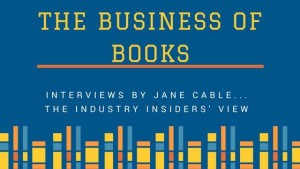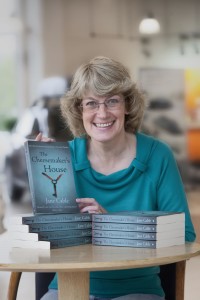Jane Cable tries to pick out the positives of writing a synopsis
Having completed the edits on one manuscript and having rescued my rights for Another You from Endeavour Press, this month has been all about considering submissions – which in most cases involves the bane of my writing life – the synopsis.
I’m not talking about the sort of synopsis you use as you create your novel, or to check structure and record plot points as you go along; I’m talking about that big, scary, one-and-only-chance-to-get-it-right document which accompanies your submission to agents and publishing houses. The synopsis as sales tool – in particular the short version – fills me with dread in a way no other blank page can.
This time, I thought I’d cracked it. Fellow RNA member and Choc Lit author Lynda Stacey very kindly sent me her template and using it made perfect sense. Like me, Lynda writes romantic suspense and has to shoehorn complex plots into a single page. I was happy with what I’d written, but when I showed it to Claire Dyer (an editor as well as an author) she drove a coach and horses through it. Clearly I need to improve.
So, what have I learnt from this sorry state of affairs.
A template to follow is really, really useful
When you are staring at a blank piece of paper there is nothing more helpful than something which lists the paragraphs you need and gives you some guidance about what to put in each. It helps you to have a method. For my short synopsis I set out the beginning of the book, then the end of the book, and filled in the middle last. It was also brilliant for pulling out the main plot strands and that focussed me through my final edits.
You’re going to need more than one carefully tailored synopsis
I’m concentrating on the direct submissions route for my novels and am hand picking the publishers I think would be right for them and who I’m really keen to work with. I don’t mean to sound arrogant, but I’m quite comfortable being an indie author if I can’t land that special deal. But what struck me when I was making my shortlist was that they all want something different; everything from a 3,000 word essay to a two paragraph blurb. It’s so important to tailor what you send to their requirements and to show you understand where your book would sit in their portfolio.
A synopsis is not a blurb It may be a selling document, but it’s not a blurb.
I was delighted when my first choice publisher asked for a blurb as I find them so much easier to write. Of course there are similarities – both have to grab the person reading it – but in different ways. A blurb entices, teases, reveals just enough. A synopsis tells the whole story. No surprises. The most important thing to bear in mind is that a publisher or agent will be thinking about how they can sell the story – a reader will be using the blurb to decide if they want to buy it.
Not everyone you submit to will need a synopsis
Yes. Really. But don’t use it as a cop out or to select who you submit to. Most agents require a synopsis, but the length varies. So will most publishers, but some have other priorities, such as finding out about your author brand – they will rely on your manuscript to see whether your book is worth taking on. You will need to become expert in selling your novel in all sorts of ways but one thing is certain: the better you become at all of them the more chance you have of landing a deal.


